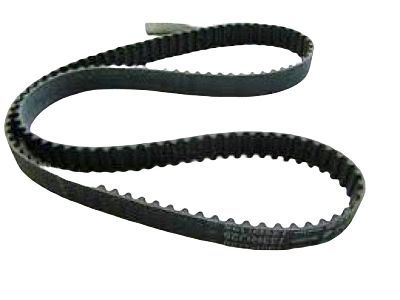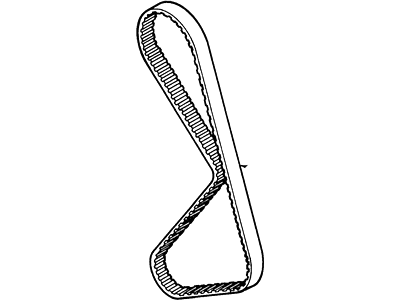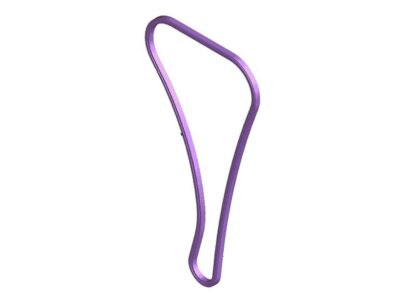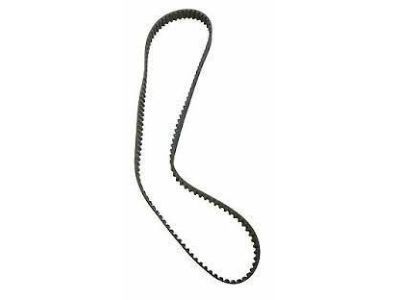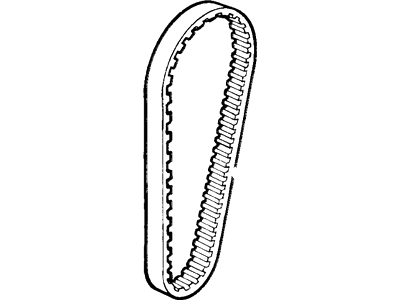

My Garage
My Account
Cart
Genuine Ford Ranger Timing Belt
Engine Timing Belt- Select Vehicle by Model
- Select Vehicle by VIN
Select Vehicle by Model
orMake
Model
Year
Select Vehicle by VIN
For the most accurate results, select vehicle by your VIN (Vehicle Identification Number).
6 Timing Belts found
Ford Ranger Belt - Timing
Part Number: F1ZZ-6268-A$20.14 MSRP: $27.52You Save: $7.38 (27%)Ships in 1-2 Business Days
Ford Ranger Timing Belt
The Timing Belt of Ford Ranger cars plays an important function of establishing the right pace between the crankshaft and the camshaft so as to make the engine valves operate in unison with the pistons. This synchronization is accompanied by use of belt to the crankshaft with the help of tensioner and idler pulleys. From the previous and currently produced Ford Rangers, the engine utilizes timing belts which are usually of rubber based and reinforced with fibers. These belts are loved for their cheapness, low friction, and less noise as compared with the past gears systems. More recent designs with curved teeth improve the service life and the acoustics. This is because failure to inspect and replace the Timing Belt often leads to serious damage on the engine, especially for those with interference engines.
We provide a wide range of Ford Ranger Timing Belt at the best prices possible. If you need Ford Ranger Timing Belt, you can shop with confidence on our website. All our OEM parts come with a manufacturer's warranty and are delivered to your door step with a fast delivery service.
Ford Ranger Timing Belt Parts Questions & Experts Answers
- Q: What are the steps involved in the removal and installation of the timing belt on 2000-2011 Ford Ranger?A:The timing system is intricate, and, due to the typical mistake, considerable harm can be done to the engine, making it a process suitable only for experienced persons. Start by removing the negative terminal then the spark plugs, where the engine should be timed with the #1 piston on the compression stroke without rotating the crankshaft until the timing belt is put or replaced. Disconnect the cooling system, take off the drivebelts, the fan shroud, fan and water pump pulley, the upper hose and the thermostat housing. If access is a problem one can always take off the radiator for even more clearance. Remove the hoses but do not disconnect them by removing the bolts on the air conditioning compressor, then pull it out of the way, remove the bolts holding the bracket on the engine and set aside the power steering pump and the bracket assembly. Take off the outer timing belt cover, crankshaft drive belt pulley, and the belt guide, then unbolt the outer timing belt cover by the use of four bolts and one screw. Remove the belt tensioner adjustment and pivot bolts to reduce belt tension and then use a belt tension releasing tool and pull the timing belt and then check the same belt for any sign of wear or damage on it. Inspect the sprockets for signs of wear or damage and then fit new ones where required but ensure that they are fitted correctly together with the bolts used for mounting them. Allow the crankshaft to turn freely by hand at least two full revolutions, feeling for any tightness which may be caused by valves coming in contact with the pistons before starting the car's engine. With the crankshaft sprocket still at TDC re-align the camshaft sprocket and the oil pump pulley with the corresponding pointers on the inner timing belt cover. Fit the belt to the crankshaft sprocket and auxiliary shaft oil pump sprocket and then stretching the belt from the camshaft sprocket to the auxiliary shaft oil pump sprocket so that the belt can sit correctly on the sprockets. Turn the tensioner adjustment bolt to enable the tensioner to push against the belt, and, optionally, use a pry bar to set the proper tension. After starting the engine turn the crankshaft two full turns to help adjust the belt and feel the contact of the valves with the pistons. Make pressure onto the tensioner assembly and turn the adjustment & pivot bolts then you have to verify the proper positioning of the timing marks. Fit the timing belt cover and torque the mounting bolts; doing other installation procedures in matching sequence while engaging the crankshaft pulley/sprocket bolt must be tight to a specified torque. Last of all, align the timing mark in both the front and rear before putting back the belt cover access plugs.
Related Ford Ranger Parts
Browse by Year
2023 Timing Belt 2022 Timing Belt 2021 Timing Belt 2020 Timing Belt 2019 Timing Belt 2001 Timing Belt 2000 Timing Belt 1999 Timing Belt 1998 Timing Belt 1997 Timing Belt 1996 Timing Belt 1995 Timing Belt 1994 Timing Belt 1993 Timing Belt 1992 Timing Belt 1991 Timing Belt 1990 Timing Belt 1989 Timing Belt 1988 Timing Belt 1987 Timing Belt 1986 Timing Belt 1985 Timing Belt 1984 Timing Belt 1983 Timing Belt
